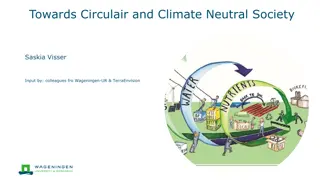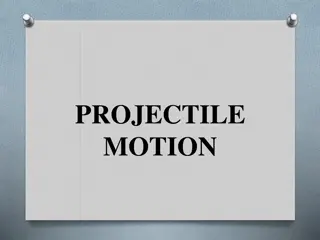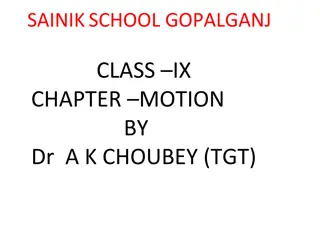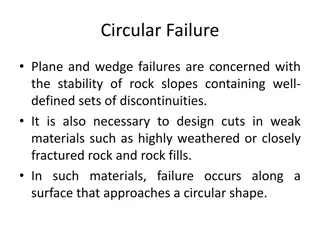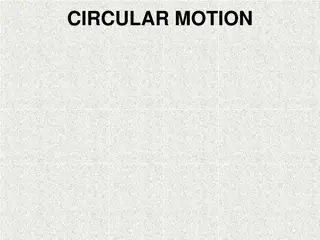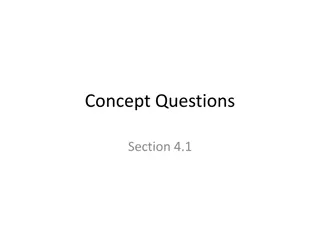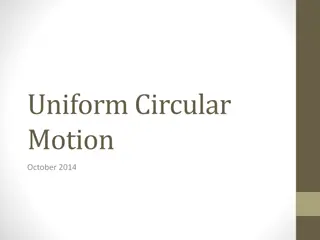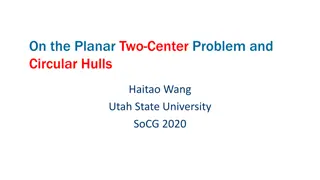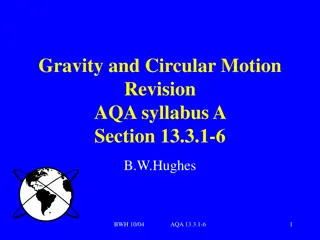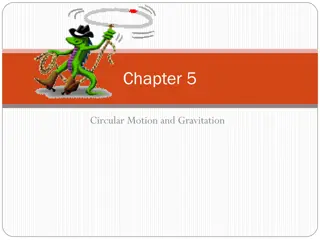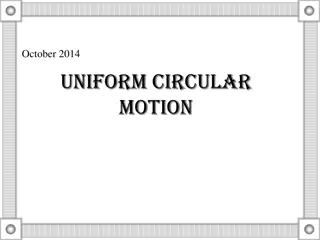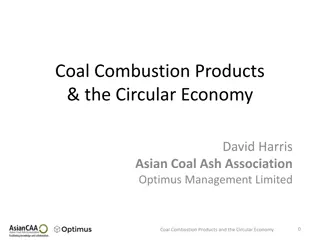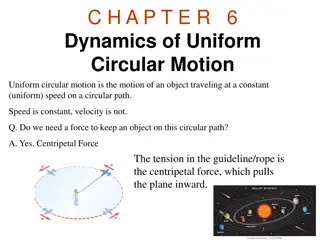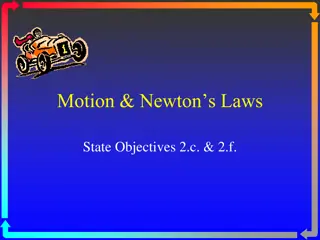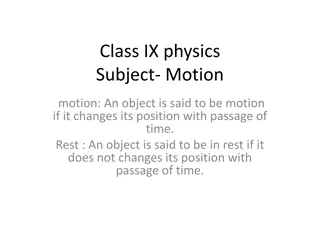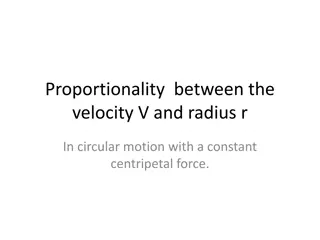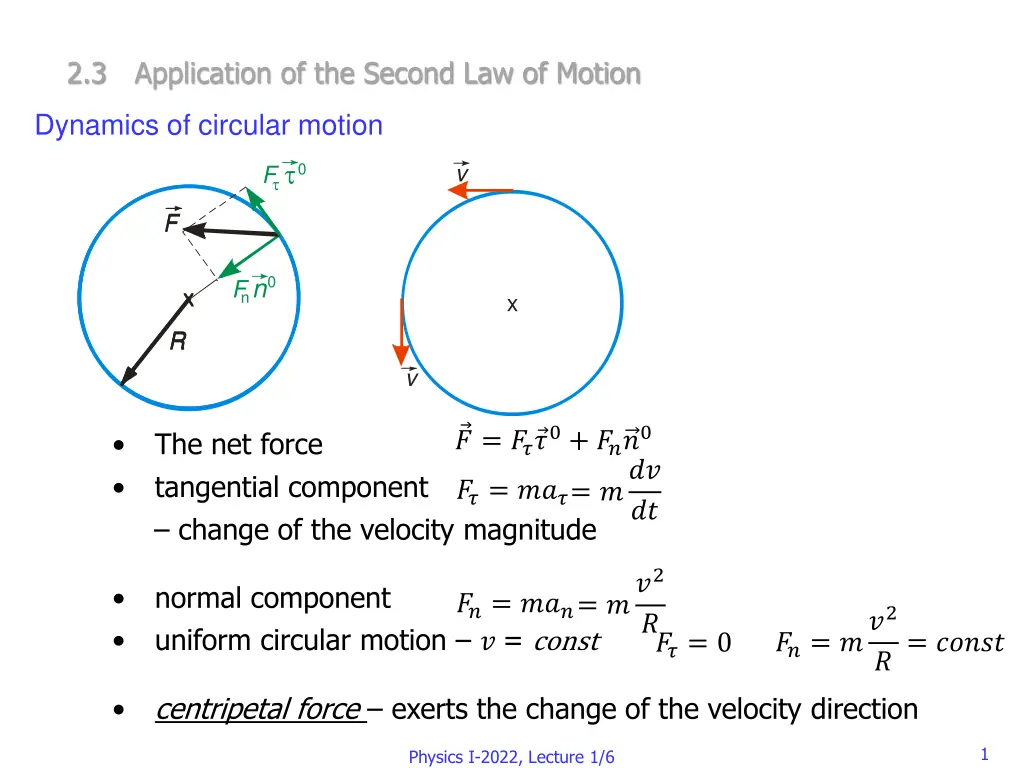
Dynamics of Circular Motion Explained
Unravel the intricacies of circular motion dynamics through the application of the Second Law of Motion. Understand how forces affect velocity changes in both tangential and normal components, essential for mastering concepts like centripetal force in uniform circular motion. Dive deeper into the physics behind these phenomena with insightful lectures and resources for Physics I-2022.
Uploaded on | 0 Views
Download Presentation

Please find below an Image/Link to download the presentation.
The content on the website is provided AS IS for your information and personal use only. It may not be sold, licensed, or shared on other websites without obtaining consent from the author. If you encounter any issues during the download, it is possible that the publisher has removed the file from their server.
You are allowed to download the files provided on this website for personal or commercial use, subject to the condition that they are used lawfully. All files are the property of their respective owners.
The content on the website is provided AS IS for your information and personal use only. It may not be sold, licensed, or shared on other websites without obtaining consent from the author.
E N D
Presentation Transcript
2.3 Application of the Second Law of Motion Dynamics of circular motion F t0 t t F t v 0 F F 0 F n n x x x x R R R v ? = ?? ?0+ ???0 The net force tangential component change of the velocity magnitude = ??? ??= ??? ?? = ??2 normal component uniform circular motion ? = const ??= ??? ??= ??2 ? ?= ????? ??= 0 centripetal force exerts the change of the velocity direction 1 Physics I-2022, Lecture 1/6
Information Contact marie.urbanova@vscht.cz, Department of Physics and Measurements, 444 Office: B222 Laboratory of circular dichroism Materials - https://e-learning.vscht.cz/course/view.php?id=1530 for the running week on previous Friday Literature lectures D. Halliday, R. Resnick, J. Walker, Fundamentals of Physics, Wiley, any editions F.J. Keller, W.E. Gettys, M.J. Skove, physics, McGraw-Hill, Inc., any edition S. Pek rek, M. Murla, Physics I, Czech Technical University 1992 seminars Dr. Myron Klenivskyi Physics I-2022, Lecture 1/6 2
Information Passing the course: 2 mandatory conditions credit: info Dr. Klenivskyi exam: before exam, the credit must be obtained written and oral parts, at least 50% from written part is needed to proceed for oral exam for 80% of maximum points from tests/homeworks the possibility to pass the oral exams only the failed exam is possible to repeat maximum 2 times early term during semester, generally in the week 14 the list of topics for the exam - SIS Physics I-2022, Lecture 1/6 3

